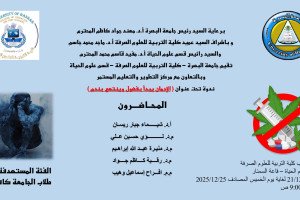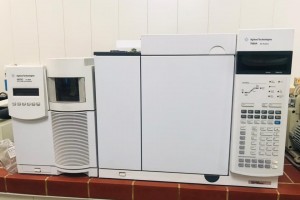
The College of Education for Pure Sciences, Department of Chemistry, University of Basra, discussed a high diploma thesis on the preparation of some compounds of Schiff bases and the study of their biological applications.
The thesis, which was managed by the researcher (Hadi Abdel Samad Jaber), included a study of the preparation of two types of new Schiff bases derived from the condensation of some sulfa compounds with benzo[d][1,3]dioxole-5-carbaldehyde
different in equal molar ratios. Schiff base with symbol (1) was prepared from condensation of sulfamethoxazole with benzo[d][1,3]dioxole-5-carbaldehyde
The Schiff base with symbol (2) was prepared by condensing sulfathiazole with benzo[d][1,3]dioxole-5-carbaldehyde.
The new Schiff bases were prepared in the presence of an acidic medium and the prepared compounds were diagnosed using FTIR, 13C-NMR and 1HNMR technology.
And by mass-spectra technology, it showed the validity of the paired molecular structures and studied the biological activity of the compounds prepared for selected models of bacteria and fungi, where the Schiff base with symbol (Th) showed the highest activity compared with Schiff base with symbol (OX). And the table below shows the general formulas of the prepared sewage bases, and we conclude from this that the relationship is direct, as the higher the biological activity, the better the prepared shalf bases.
The purpose of the message
Prepare two bases Schiff
Preparation: Two Schiff bases derived from sulfa compounds were prepared by reacting the sulfa compounds sulfamethoxazole and sulfathiazole with (benzo[d] [1,3] dioxole-5-Carbaldehyde) in the presence of acid as a catalyst.
Results:
The prepared Schiff bases were diagnosed using FTIR infrared technology, 1HNMR, 13CNMR1 technology and Mass-spectra technology, which showed the validity of the prepared Schiff bases and studied the biological activity of the prepared Schiff bases for selected samples of bacteria.
Where compound 1 showed the highest effectiveness compared to compound 2








